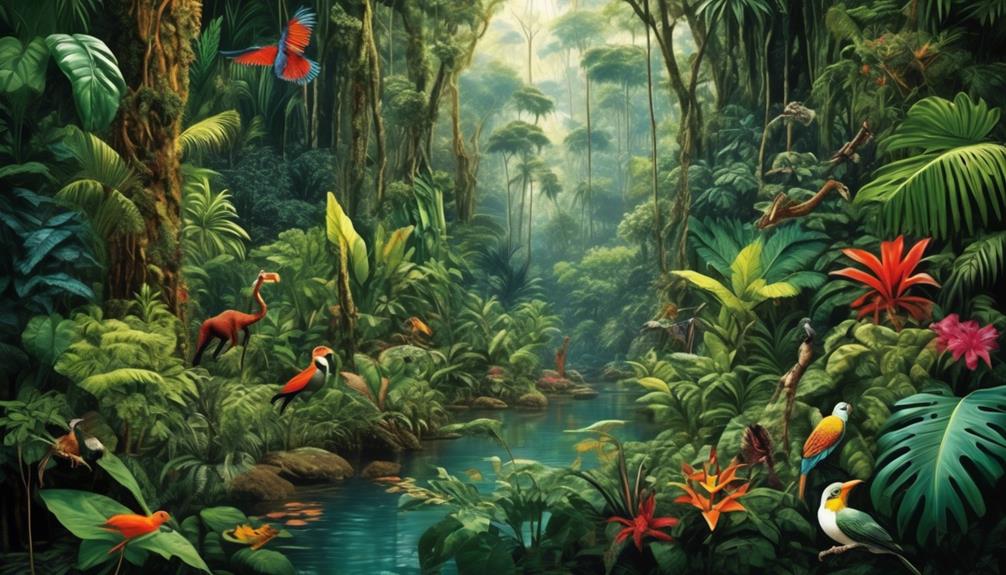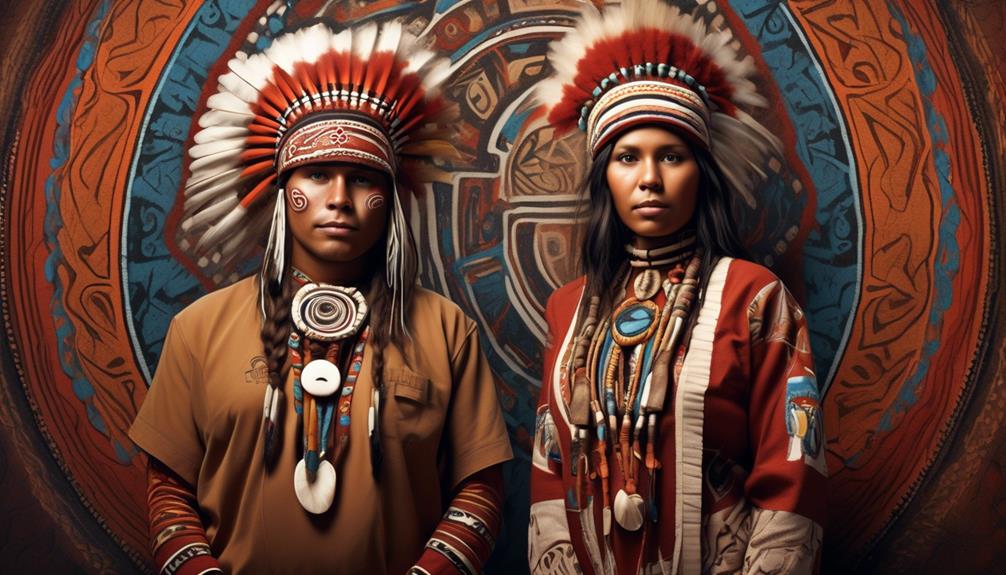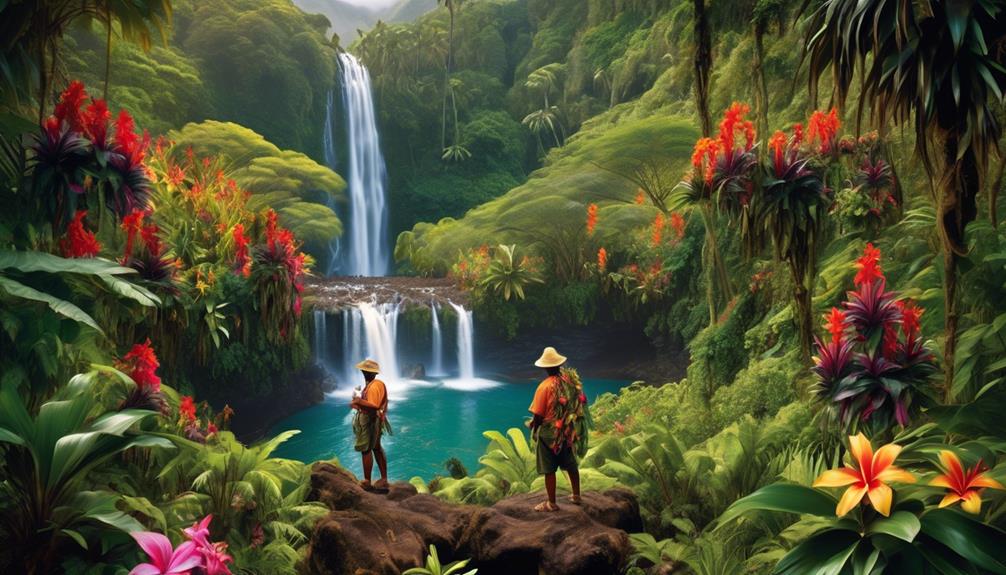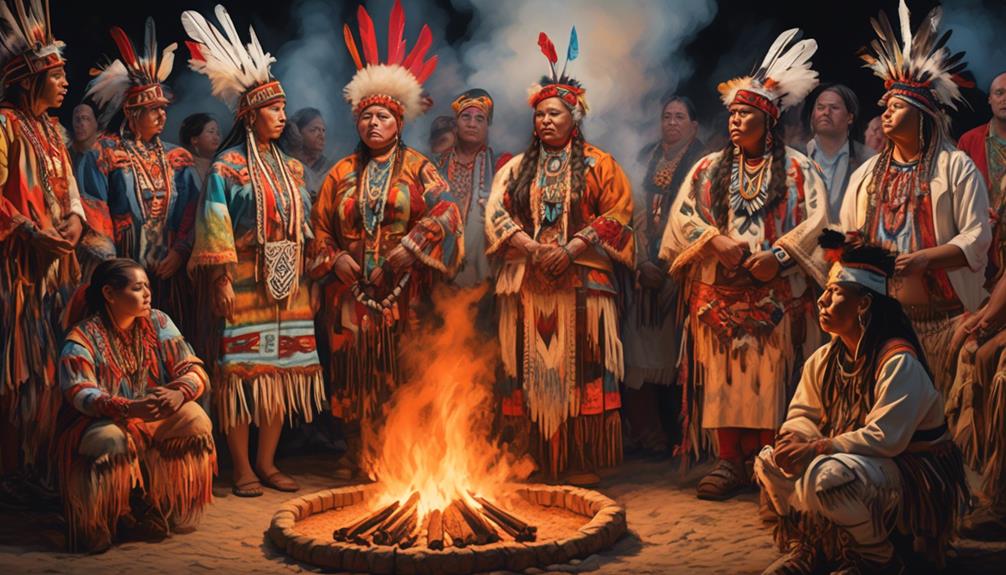Have you ever thought about the distinction between native and endemic species? Our planet is filled with a vast array of life, and understanding the significance of these concepts can shed light on the intricate web of living organisms.
As you navigate through this discussion, you'll gain insight into the unique roles that native and endemic species play in their respective ecosystems, and how human activities have impacted their existence.
But what exactly sets them apart, and why does it matter?
Key Takeaways
- Native species occur and thrive in a specific ecosystem, while endemic species are exclusively found in a particular geographic area.
- Climate change and habitat destruction disrupt the distribution of both native and endemic species.
- Non-native species can outcompete native and endemic species for resources.
- Protecting endemic species is crucial for preserving the integrity of their respective ecosystems.
Definition of Native and Endemic
Native species are those that naturally occur and thrive in a particular ecosystem, while endemic species are those that are exclusively found in a specific geographic area. The key difference between the two lies in their distribution patterns. Native species can thrive in multiple ecosystems across different geographic areas, while endemic species are restricted to a single geographic location.
However, both native and endemic species play crucial roles in maintaining the balance of their respective ecosystems.
Despite their differences, both native and endemic species face similar conservation challenges. Human activities such as deforestation, habitat destruction, and climate change threaten the survival of both native and endemic species. Conservation efforts aimed at protecting these species often involve creating and maintaining protected areas, implementing sustainable land management practices, and raising awareness about the importance of preserving biodiversity.
Understanding the similarities and differences between native and endemic species is essential for developing effective conservation strategies. By recognizing the unique distribution patterns and conservation needs of these species, we can work towards preserving the rich diversity of life on our planet.
Factors Affecting Distribution

In understanding the distribution of native and endemic species, it's important to consider the various factors that influence their presence in ecosystems.
Climate change and habitat destruction significantly impact the distribution of native and endemic species. Changes in temperature and precipitation patterns can disrupt the delicate balance of ecosystems, leading to shifts in the distribution of species. Habitat destruction, whether through human activity or natural causes, can fragment and reduce suitable habitats for native and endemic species, further affecting their distribution.
Species competition also plays a crucial role in the distribution of native and endemic species. When non-native species are introduced into an ecosystem, they can outcompete native and endemic species for resources, leading to their displacement or decline in numbers. Additionally, colonization events, such as the introduction of new species to an area, can alter the distribution patterns of native and endemic species, often leading to significant changes in their populations.
Understanding these factors is essential for conservation efforts and ecosystem management, as they provide valuable insights into the dynamics of native and endemic species distribution. By addressing these factors, it becomes possible to mitigate the impacts of climate change, habitat destruction, species competition, and colonization events, thereby supporting the preservation of native and endemic species in their natural habitats.
Ecological Importance
Considering the interconnectedness of ecosystems, understanding the ecological importance of native and endemic species is crucial for preserving biodiversity and maintaining the balance of natural habitats.
Native species play a fundamental role in supporting ecosystem balance. They've evolved over time and are well adapted to their specific habitats, contributing to the intricate web of species interactions. These interactions are essential for maintaining the health and stability of ecosystems. Native species often have symbiotic relationships with other organisms, such as pollinators or seed dispersers, which are vital for the survival of many plant species. Additionally, native species can act as keystone species, exerting a disproportionately large influence on their natural communities.
Endemic species, being unique to a particular area, also hold ecological significance. They often play specialized roles in their ecosystems, and their presence can be indicative of the overall health and stability of a habitat. Protecting endemic species is crucial for preserving the integrity of their respective ecosystems. These species can provide valuable insights into the functioning of specific ecosystems and contribute to the overall biodiversity of a region.
Understanding and protecting both native and endemic species are essential for ensuring the resilience and sustainability of natural environments.
Human Impact on Native and Endemic Species
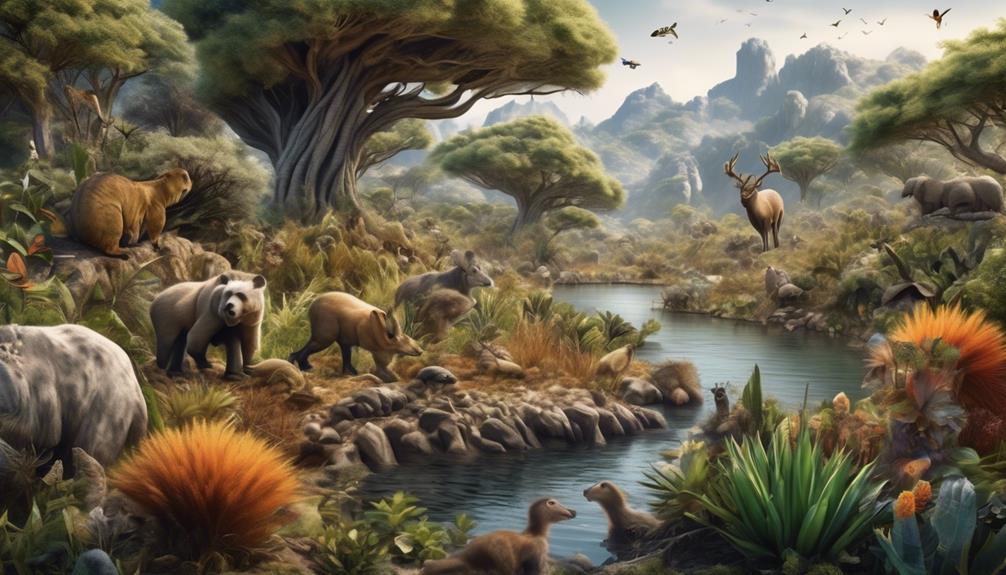
As we explore the impact of human activities on native and endemic species, it becomes evident that our actions can significantly disrupt the delicate balance and interconnectedness of ecosystems, potentially leading to irreversible consequences for biodiversity.
One of the major issues contributing to this disruption is human-wildlife conflict, where human activities encroach upon natural habitats, leading to conflicts between humans and native or endemic species. This conflict often results in negative outcomes for the wildlife, as they may be displaced, injured, or killed, further threatening their populations and disrupting the ecological balance.
Habitat destruction, driven by factors such as urbanization, agriculture, and deforestation, is a primary driver of human-wildlife conflict. As human populations expand and seek resources, natural habitats are increasingly encroached upon or destroyed, leaving native and endemic species with limited space and resources to survive. This loss of habitat not only directly impacts the affected species but also cascades through the ecosystem, affecting other species that depend on them for food or other ecological services.
Understanding and mitigating human impact on native and endemic species requires a concerted effort to address the root causes of human-wildlife conflict and habitat destruction. Conservation efforts, sustainable land use practices, and community engagement are crucial in mitigating these impacts and fostering coexistence between human activities and the preservation of native and endemic species.
Conservation Strategies
To effectively conserve native and endemic species, implementing targeted habitat restoration projects is essential for ensuring their survival and ecological resilience. Habitat restoration involves restoring the natural habitats of these species, which have been impacted by human activities and invasive species. Through strategic restoration efforts, the natural balance can be reinstated, providing a sustainable environment for native and endemic species to thrive.
Invasive species management is another crucial aspect of conservation strategies, as these non-native species often outcompete native and endemic species for resources, leading to a decline in their populations. By actively managing and controlling invasive species, the native and endemic species can reclaim their ecological niches and flourish once again.
Conservation Strategies for Native and Endemic Species
- Implementing targeted habitat restoration projects
- Engaging in proactive management of invasive species
- Collaborating with local communities for conservation efforts
- Utilizing scientific research to inform conservation decisions
- Establishing protected areas and wildlife corridors
These strategies are vital to safeguarding the rich biodiversity of native and endemic species, ensuring their continued existence for future generations to appreciate and cherish.
Frequently Asked Questions
How Do Native and Endemic Species Contribute to the Cultural Heritage of Indigenous Communities?
Native species play a crucial role in cultural preservation and traditional knowledge of indigenous communities. They contribute to biodiversity conservation and ecological balance, supporting the overall health of the ecosystem.
Endemic species, on the other hand, are particularly important for maintaining the unique cultural heritage of indigenous communities, as they're found exclusively in specific regions and are often deeply intertwined with local traditions and customs.
Are There Any Specific Genetic Differences Between Native and Endemic Species That Make Them More Resilient to Environmental Changes?
Genetic adaptations in native and endemic species can enhance their ecological resilience. These differences may contribute to their ability to thrive in specific environmental conditions.
Understanding the genetic makeup of these species can provide valuable insights into how they've evolved to withstand environmental changes. By studying these genetic variations, researchers can gain a deeper understanding of how native and endemic species are uniquely equipped to adapt to their habitats.
What Are the Most Common Misconceptions About Native and Endemic Species?
Think about it, people often assume that native and endemic species are interchangeable, but that's a big misconception.
Many believe that native species are always beneficial for the environment, while endemic species are not.
And some folks think that endemic species have the most pharmaceutical potential.
However, these misconceptions can lead to misunderstandings about the ecological impact and resilience of native and endemic species.
Can Native and Endemic Species Be Used in Pharmaceutical Research to Develop New Medicines?
Yes, native and endemic species can be used in pharmaceutical research to develop new medicines. Their unique genetic makeup and medicinal properties make them valuable resources for pharmaceutical development.
How Do Native and Endemic Species Interact With Non-Native Species in Their Ecosystems?
In the intricate web of ecosystems, interactions among native, endemic, and non-native species shape the delicate balance of nature. They compete for resources, forcing adaptation to survive.
Understanding these interactions is crucial for conservation efforts, ensuring the preservation of diverse habitats. Mastery of these dynamics illuminates the impact of non-native species on native and endemic species, highlighting the need for sustainable management strategies to maintain ecosystem health and biodiversity.
Conclusion
So, next time you take a walk in the woods, keep an eye out for the native and endemic species that call it home.
They're like the colorful strokes of a painting, adding depth and beauty to the natural landscape.
But remember, their existence is delicate and threatened by human activity.
It's up to us to protect and preserve these important pieces of the puzzle for future generations to enjoy.
